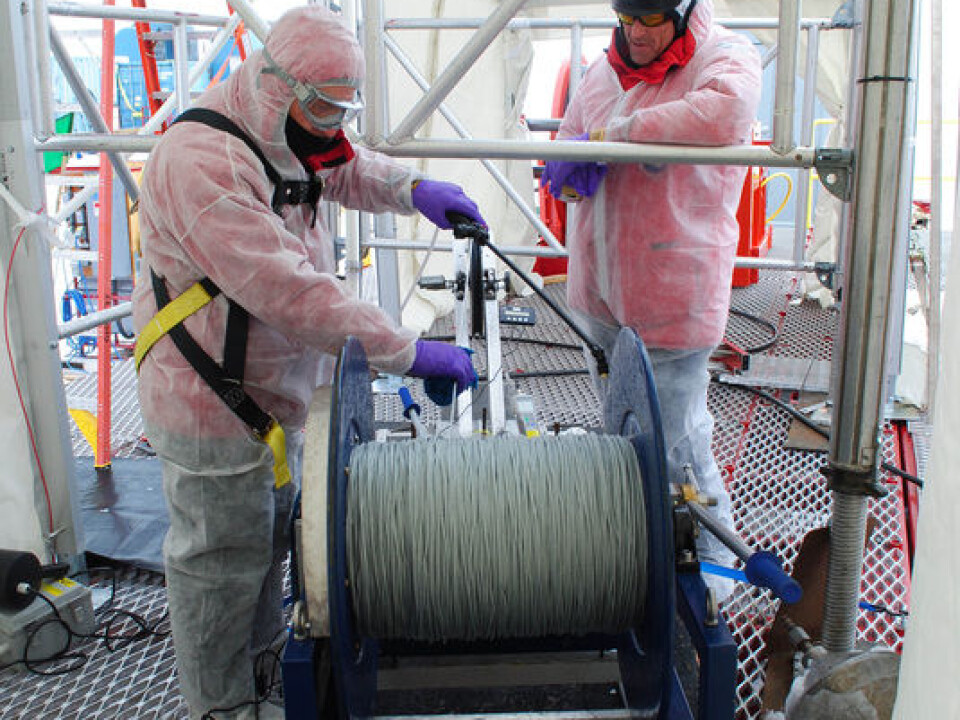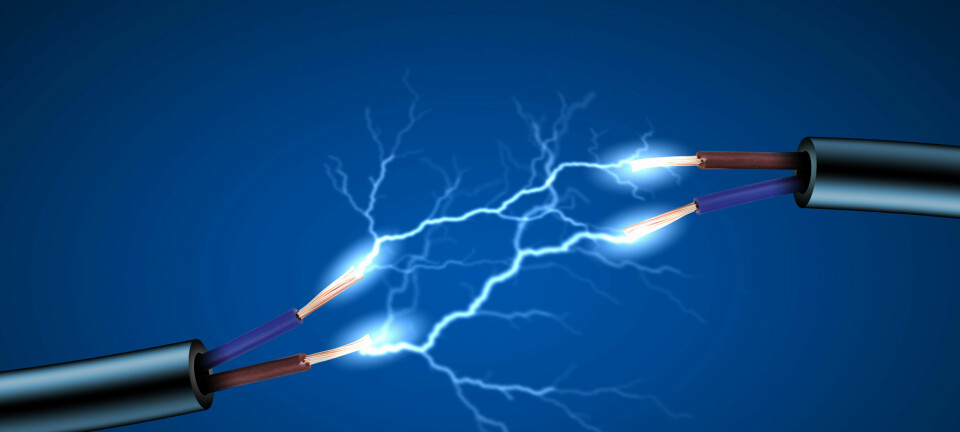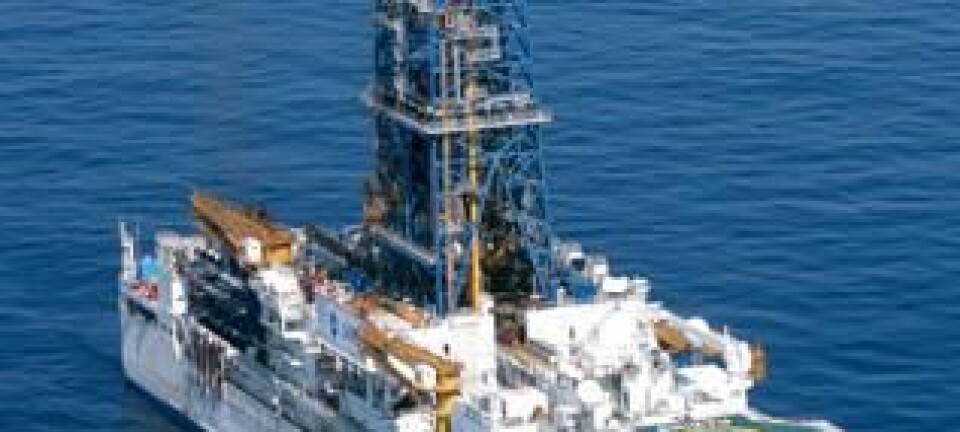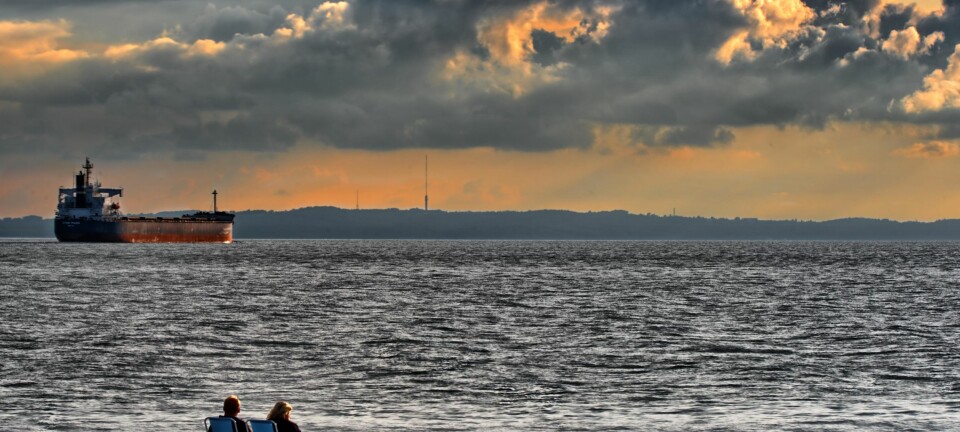
Bacteria thrive on methane deep beneath the Antarctic Ice Sheet
For the first time, scientists have direct observations of methane-eating bacteria in a subglacial lake in Antarctica. The study also provides evidence of increased methane production below the ice sheet.
A subglacial lake 800 metres beneath the frozen surface of West Antarctica might not sound like a hospitable place for life. But that is exactly what scientists have discovered: methane-eating bacteria surviving deep underneath the ice sheet.
It is the first time that scientists have observed these bacteria in action. At the same time, they have also found direct evidence of increased methane production underneath the ice.
“These methane-oxidizing bacteria could be an abundant way of life under the West Antarctic Ice Sheet,” says Alexander Michaud from the Centre for Geomicrobiology in the Department of Bioscience, Aarhus University.
He is the lead-author of the new study, published in Nature Geoscience.

According to Michaud, the new findings suggest that these microorganisms and their way of life could exist across the bottom of the vast ice sheet.
An earlier study from 2014 also indicated that the subglacial lakes underneath the ice might be host to an abundance of microorganisms, but it is not until now that scientists have been able to observe these methane-loving bacteria alive.
Follow the methane
The results are the latest from the US-funded project WISSARD where scientists investigate an unusual feature of ice sheets: subglacial lakes, that is, lakes that develop deep underneath the ice (see fact box).
One of the big questions that the project seeks to answer, is how anything can survive inside these lakes—some of which are covered by almost 4,000 metres of ice.
An important clue is methane, says Michaud.
A study published in nature in 2012, suggested that there might be of a lot of methane under the West Antarctic Ice Sheet.
“It’s a pretty potent greenhouse gas, but it’s also a good energy source for bacteria. If there’s an abundance of methane then you’d guess there’d be a lot of microbes there too,” he says.
Methane-loving life deep under the ice
Michaud and colleagues studied Subglacial Lake Whillans, a lake 800 metres beneath the surface of the West Antarctic Ice Sheet.
First, they measured the amount of methane in the sediments at the bottom of the lake as well as in the lake water above. To their surprise, they detected almost 300 times more methane in the sediments than in the lake water.
Since the methane seeps up through the sediments, this suggested that something was actively removing the methane before it reached the lake water, says Michaud.
They then measured DNA and RNA in the water and the sediments and discovered a host of species, but the most abundant was a type known to survive by consuming methane.
“A very novel and fascinating study”
Professor Jemma Wadham from the School of Geographical Sciences at the University of Bristol, UK, was the lead-author of the 2012 study published in Nature, in which she first described the possibility of large reservoirs of methane underneath Antarctica.
She describes the new study as “very novel” and “fascinating” as it shows the first direct evidence of methane production beneath the Antarctic ice sheet, as well as consumption by bacteria in a subglacial lake.
“People have shown high methane in glacial runoff [meltwater than runs off from the ice sheet]. But no one has directly sampled beneath an ice sheet and found elevated methane levels as these authors have,” writes Wadham in an email to ScienceNordic.
Prevents release of potent greenhouse gas
Methane is a potent greenhouse gas and it is much more effective at trapping the sun’s energy inside our atmosphere than carbon dioxide.
If the bacteria were not there, then the methane seeping up through the sediments underneath Lake Whillans would likely flow into the ocean where it would be eventually released into the atmosphere.
But both Michaud and Wadham agree that it is too soon to draw any conclusions as to whether these bacteria could prevent large amounts of methane escaping from under the ice sheet elsewhere in Antarctica or over longer time periods.
“I think this is very interesting and encouraging news but it's just one study, at one [location], and there is likely much more complexity to this,” writes Wadham.
Michaud expands on this:
“What happens to [the methane] when the ice sheet retreats? We don’t know. Will the microbes be able to consume it all? Maybe. But there are a lot of physical changes when an 800-metre-thick ice sheet retreats and leaves ocean water covering the sediments, rather than fresh water. We don't know how these changes will affect the [methane] and the microorganisms that eat it,” he says.
“But in terms of understanding how life exists under the ice sheet, the fact that this could be a wide reaching process is a more exciting find than the prevention of methane reaching the atmosphere,” says Michaud.









